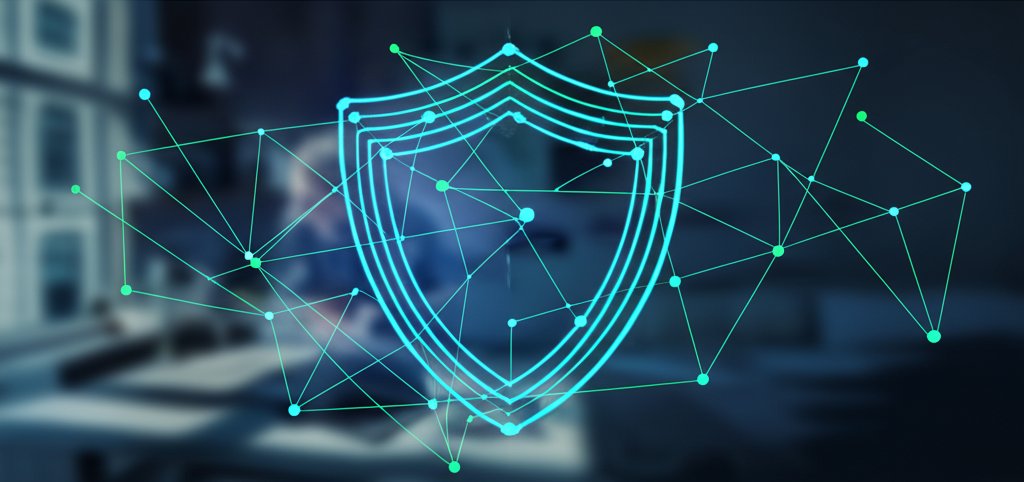How to Fortify Your Cloud Security: A Practical Guide for Everyone
Boost your cloud security posture with this essential guide! Learn straightforward steps to protect your precious data on Google Drive, Microsoft 365, iCloud, and more. Critical tips for individuals and small businesses alike.
As a security professional, I’ve witnessed firsthand the transformative power of the cloud in both our work and personal lives. It delivers unparalleled flexibility and convenience, doesn’t it? Yet, with all that convenience comes a critical responsibility: safeguarding our digital assets. Cloud security might sound like a dauntingly complex, technical topic reserved for large enterprises, but I promise you, it’s not. Whether you’re an individual diligently safeguarding family photos and personal documents, or a small business managing sensitive client data, understanding and actively improving your cloud security posture is absolutely vital.
Think of your cloud security posture as your overall readiness to defend the information you store in the cloud. It’s about clearly knowing where your data resides, precisely who can access it, and what robust protective measures you’ve meticulously put in place. In this guide, we will strip away the jargon and provide you with practical, actionable steps to significantly strengthen your cloud defenses, empowering you to take decisive control of your digital security without needing a degree in cybersecurity.
What You’ll Learn
By the end of this guide, you’ll be able to:
- Understand what “cloud security posture” means specifically for you, your family’s data, or your small business.
- Identify your personal and business cloud footprint and the specific types of data you’re storing.
- Implement foundational security measures like impenetrable strong passwords and Multi-Factor Authentication (MFA).
- Manage access controls effectively to rigorously prevent unauthorized data access.
- Grasp the critical importance of data encryption and how to ensure secure configurations.
- Develop smart, proactive practices for backups, system updates, and personal/employee awareness.
- Make informed decisions when choosing and managing cloud providers.
- Stay vigilant with continuous monitoring, even if it’s just a quick check of activity logs.
Prerequisites
You don’t need any advanced technical knowledge to follow this guide. All you need is:
- An understanding that you’re currently using cloud services (e.g., Google Drive, Dropbox, iCloud, Microsoft 365, online banking, accounting software).
- A willingness to invest a little time reviewing your current settings and making crucial adjustments.
- An internet connection to access your various cloud accounts.
Your Security Journey: A Clear Roadmap
To help you navigate this guide and build a robust defense, here’s an outline of the sections we’ll cover:
- Phase 1: Building Your Foundation – We’ll dive immediately into the most critical, actionable steps you can take today: strong passwords, Multi-Factor Authentication (MFA), and initial access controls.
- Phase 2: Gaining Clarity and Control – Understanding your digital footprint and the shared responsibility model.
- Phase 3: Smart Practices for Sustained Security – Covering secure configurations, backups, staying updated, and human awareness.
- Phase 4: Elevating Your Protection – Advanced tips for choosing providers, continuous monitoring, and long-term vigilance.
- Common Issues & Solutions – Practical fixes for everyday cloud security challenges.
Phase 1: Building Your Foundation – Your Immediate Action Plan
These are the absolute essentials, your digital deadbolts and alarm systems. Let’s get these critical defenses in place right now.
- Strong Passwords & Multi-Factor Authentication (MFA): Your First Line of Defense
This is arguably the single most impactful step you can take immediately to secure your cloud accounts. Don’t delay on this one!
- Passwords: You know the drill, but it bears repeating: use unique, complex passwords for every single cloud service. For individuals, this means for your email, iCloud, Google Drive, and social media. For businesses, this extends to every SaaS application, CRM, and internal system. Password managers are your indispensable best friend here. Do not reuse passwords. Ever.
- Multi-Factor Authentication (MFA): This is the digital equivalent of adding a second, uncrackable lock to your front door. MFA adds a crucial second layer of verification beyond just your password. Even if a criminal manages to steal your password, they simply cannot gain access without that second factor.
- How to use MFA effectively:
- Authenticator Apps: Applications like Google Authenticator, Microsoft Authenticator, or Authy are generally far more secure and reliable than relying on SMS codes (which can be intercepted).
- Security Keys: Physical devices like YubiKey offer the highest level of protection, making unauthorized access exceedingly difficult.
- Enable it Everywhere: Go to the security settings of every single cloud service you use – Google, Dropbox, Microsoft, your online banking, your accounting software – and enable MFA. It takes only a few minutes per account but provides immense peace of mind and vastly superior protection.
- Initial Access Control: Who Can See What?
This is about setting your digital gates and meticulously managing your guest lists. The core principle here is “least privilege“—only give people the access they absolutely need to do their job or complete a task, and nothing more.
- Review Sharing Settings Regularly: For services like Google Drive, Microsoft OneDrive, or Dropbox, actively check your shared folders and individual files. Are there public links you created and then forgot about? Are old collaborators or former employees still listed? Promptly remove anyone who no longer requires access. For personal users, this might mean reviewing shared family photo albums or joint financial documents.
- Limit Public Sharing: Be extraordinarily cautious about making any files or folders publicly accessible. Only do so if it is absolutely necessary for a specific purpose, and rigorously ensure the data is not sensitive.
- Remove Old Accounts/Access: For small businesses, when an employee departs, immediately deactivate their access to all cloud services. This is a common and dangerous oversight that frequently leads to critical security gaps. For individuals, remove access for anyone who no longer needs to see a shared photo album or document.
- Data Encryption: Locking Up Your Information
Encryption scrambles your data, making it completely unreadable to anyone without the correct digital key. It’s like putting your most sensitive documents in a robust, locked safe before storing them in the cloud.
- Cloud Provider Encryption: Most reputable cloud providers (Google, Microsoft, Dropbox, Apple) offer strong encryption for your data “at rest” (when it’s stored on their servers) and “in transit” (as it moves securely between your device and their servers). Take a moment to verify that this is indeed enabled in your provider’s security settings.
- Client-Side Encryption (For Highly Sensitive Data): For extremely sensitive personal or business data, you might consider encrypting files on your own computer before uploading them to the cloud. Tools like Cryptomator can help, adding an extra layer of protection that even your cloud provider cannot bypass.
Phase 2: Gaining Clarity and Control – Understanding Your Digital Landscape
Before you can effectively secure your cloud assets, you need to understand precisely what they are and where they live. It’s akin to securing your physical home; you must first identify all the doors, windows, and valuable possessions inside. We all have digital belongings scattered across various cloud services.
- Identify Your Cloud Services:
- Personal Users: Take a moment to think about where you store your photos, critical documents, and emails. Is it Google Drive, Dropbox, iCloud, OneDrive, or a combination? Don’t forget social media, fitness apps, or any other services storing your personal data.
- Small Businesses: Create a comprehensive list of every single cloud service you utilize. This might include Google Workspace (Gmail, Drive, Docs), Microsoft 365 (Outlook, Word, SharePoint), QuickBooks Online, Salesforce, Trello, Zoom, Slack, and any industry-specific applications. Be thorough!
- What Data Are You Storing?
Once you’ve identified all your services, consider what sensitive data resides within each. Are you storing:
- Personally Identifiable Information (PII) like addresses, phone numbers, health records, or Social Security Numbers?
- Financial data (bank statements, invoices, credit card numbers, tax documents)?
- Business secrets, client lists, contracts, or intellectual property?
- Confidential communications or private family memories?
Knowing the sensitivity of your data is paramount as it helps you logically prioritize your security efforts and allocate resources effectively.
- The Shared Responsibility Model (Simplified): What’s Your Job, What’s Theirs?
This concept is absolutely crucial! Cloud providers (like Google, Microsoft, Amazon) are responsible for securing the underlying infrastructure—the physical data centers, the networks, and the foundational software. Think of it like a landlord who secures the building’s structure, plumbing, and electricity. However, you, the user, are ultimately responsible for your data and configurations—the locks on your apartment door, what you choose to put inside, and how you decide to share it. This means:
- Provider’s Job: Keeping their servers, networks, and operating systems secure, patching vulnerabilities, and protecting against physical threats to their data centers.
- Your Job: Setting strong passwords, enabling MFA, carefully managing who has access to your files, configuring sharing settings responsibly, maintaining secure backups of your critical data, and staying vigilant against phishing scams and social engineering.
We simply cannot afford to assume they do everything for us!
Phase 3: Smart Practices for Sustained Security
These ongoing practices are essential to keep your defenses strong, adaptive, and resilient against new and evolving threats.
- Secure Configuration is Key: Avoiding Common Missteps
Default settings are rarely the most secure. More often than not, they are designed for maximum convenience or ease of use, not fortress-like security.
- Review Default Settings: Whenever you set up a new cloud service or account (personal or business), always make it a priority to dive deep into the security and privacy settings. Look for options to restrict sharing, disable unnecessary features, or enable stricter access controls.
- Example: Publicly Accessible Storage: For individuals, avoid leaving cloud photo albums or document folders accessible to “anyone with the link” unless absolutely necessary. For small businesses using more advanced cloud storage buckets (like Amazon S3 or Google Cloud Storage), ensure they are not publicly accessible unless there is an extremely specific and justified business reason, and even then, strictly limit access. This oversight is a disturbingly common source of major data breaches.
- Regular Backups & Recovery Plans: Don’t Lose Everything!
Even with the most meticulously implemented security measures, things can still go wrong—accidental deletion, ransomware attacks, or even a rare cloud provider outage. Having a robust backup strategy is your ultimate safety net.
- Back Up Critical Cloud Data: Do not rely solely on your cloud provider for backups. Regularly download or sync your most critical personal files (e.g., family photos, tax documents) or business files to an external hard drive or a different, entirely separate cloud service.
- Offline/Separate Cloud Strategy: Consider adopting the “3-2-1 backup rule”: maintain 3 copies of your data, store them in 2 different formats, and keep 1 copy off-site. For cloud data, this might mean a local copy on your computer, a backup to another cloud service, and perhaps an encrypted copy on an external drive.
- Simple Recovery Plan: Know precisely what you would do if you suddenly lost access to your primary cloud service. How would you recover your essential personal photos, financial records, or critical business documents? Who would you contact?
- Stay Updated: Software, Apps, and Operating Systems
Software updates are not just for new features; they frequently include critical security patches that close vulnerabilities attackers actively exploit. Running outdated software is akin to leaving a wide-open door for cybercriminals.
- Keep Everything Current: Ensure your operating system (Windows, macOS, iOS, Android), your web browsers (Chrome, Firefox, Edge, Safari), and all cloud-related applications on your devices are regularly updated. Enable automatic updates wherever possible, and make it a habit to check manually if auto-updates aren’t an option.
- Employee Training & Awareness (for Small Businesses & Families): Your Human Firewall
A significant percentage of data breaches involve human error. Your team—or even your family members—are your first line of defense, not just your technical infrastructure.
- Basic Security Training: Regularly train your employees (and discuss with family members) on core security practices: how to effectively spot phishing emails, the absolute importance of strong passwords and MFA, safe sharing practices, and what to do immediately if they suspect a security incident.
- Foster a Security-Aware Culture: Make security a regular, open conversation, not a dreaded lecture. Encourage questions and empower everyone to report suspicious activity without fear. The proactive steps you take will cultivate a crucial culture of vigilance.
Common Issues & Solutions
Even with the best intentions, we all make mistakes. Here are some of the most common cloud security issues and straightforward ways to fix them.
- Issue: Overly Permissive Sharing
You shared a personal document or a business file with “Anyone with the link” and subsequently forgot about it, potentially exposing sensitive data.
Solution: Make it a habit to regularly review sharing settings for all your cloud documents and folders. In Google Drive, utilize the “Shared with me” and “Shared by me” sections. In Dropbox, meticulously check your sharing tab. Immediately remove access for anyone who no longer needs it and change public links to restricted access whenever possible.
- Issue: Weak or Reused Passwords
Using the same password for multiple services, or a password that’s trivially easy to guess, leaves you incredibly vulnerable.
Solution: Invest in a password manager. It will securely generate strong, unique passwords for every single site and store them safely. Then, enable MFA on all accounts. This powerful combination makes it incredibly difficult for attackers to gain access, even if a single password is compromised. It genuinely is a game-changer for your overall security posture.
- Issue: Ignoring Security Alerts
Your cloud provider sends you an email about unusual login activity, but you dismiss it as just spam.
Solution: Take all security alerts seriously, without exception. If you receive an alert about a suspicious login or activity, immediately investigate it. Change your password, review recent activity logs within the service, and report it to your cloud provider if necessary.
- Issue: Outdated Software/Apps
Your operating system or web browser is several versions behind, leaving known vulnerabilities unpatched and exploitable.
Solution: Enable automatic updates for all your devices and software. Make it a simple habit to check for updates manually once a week. It takes only a minute, but it can close critical security gaps that would otherwise be exploited.
Phase 4: Elevating Your Protection – Advanced Strategies for Long-Term Security
Once you’ve firmly established the foundational basics, you might want to consider these steps for an even stronger and more resilient security stance.
- Choosing and Managing Cloud Providers Wisely
Not all cloud providers are created equal. For small businesses especially, but also for individuals entrusting their most personal data, due diligence is absolutely key.
- Ask the Right Questions: Before committing to a new cloud service, do not hesitate to ask probing questions about their security measures. What kind of encryption do they utilize? Where is your data physically stored? What are their specific breach notification and incident response protocols? A truly good, reputable provider will be transparent and forthcoming.
- Read the Fine Print (Security & Privacy Policies): It’s often tedious, I know, but take the time to skim through their terms of service, security policy, and privacy policy. Critically understand what their responsibilities are and what your responsibilities remain under the shared responsibility model.
- Leverage Provider Security Features: Most major cloud providers offer advanced security tools that go beyond the basics. Enable comprehensive activity logs to meticulously track who accessed what and when. Set up granular security alerts for unusual behavior, unauthorized access attempts, or critical configuration changes. You are paying for these features; make sure you utilize them!
- Continuous Monitoring (Simplified): Staying Vigilant
Cloud security is not a one-time setup; it demands ongoing attention and adaptation. Think of it as regularly checking the locks and windows of your home, rather than just locking up once and walking away.
- Check Activity Logs: Many services (Google, Microsoft, Dropbox) offer accessible activity logs. Take a few minutes once a month to review who accessed what and when. Look specifically for anything unusual, unfamiliar, or suspicious.
- Set Up Alerts: Configure notifications for critical actions such as new device logins, bulk file downloads, changes to critical sharing settings, or disabled MFA. You can often get these sent directly to your email or phone for immediate awareness.
- Regular Security Audits (Self-Performed): Periodically (perhaps quarterly for businesses, or even annually for personal users), conduct a mini-audit of your own. Review all your cloud accounts, re-check sharing settings, update passwords (if not using a manager), and rigorously ensure MFA is still active and functioning correctly on every service.
Next Steps
Congratulations! You’ve now armed yourself with a wealth of practical knowledge to significantly improve your cloud security. But knowledge is only truly powerful when actively applied.
Your immediate next steps should be:
- Inventory Your Cloud Services: Make a comprehensive list of every single cloud service you use, both personal and business.
- Enable MFA: Go through that list and enable Multi-Factor Authentication on every single service that supports it. This is your biggest immediate security win.
- Review Sharing Settings: Pick one or two key services (like your primary document storage or photo album) and rigorously review all sharing settings, promptly removing unnecessary access.
- Check for Updates: Ensure all your devices and browsers are fully updated to their latest versions.
Conclusion: Your Path to a Stronger Cloud Security Posture
Fortifying your cloud security posture might initially seem like a daunting task, but as you’ve seen, it’s truly about taking a series of practical, manageable, and highly effective steps. You absolutely do not need to be a cybersecurity expert to make a profound and positive difference. By diligently understanding your cloud footprint, embracing strong passwords and Multi-Factor Authentication, meticulously managing access, and staying continuously vigilant, you’re not just protecting abstract data; you’re safeguarding your peace of mind, preserving your privacy, and ensuring your business continuity.
Remember, cyber threats are constantly evolving, but critically, so are our defenses. Every small, proactive step you take adds up to a significantly more secure digital life. So, what are you waiting for? Start today, protect your digital world, and share your results! Follow for more tutorials on keeping your digital life safe and simple.









